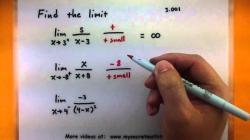What is the relationship between range and domain?
The relationship between the domain and range of a function is fundamental to understanding how the function operates. In mathematics, a function is a rule or mapping that assigns each element in the domain to a unique element in the range. Here's a more detailed explanation of their relationship:
Domain: The domain of a function is the set of all possible input values (independent variable) for which the function is defined. It represents the values for which you can plug into the function to obtain meaningful results. In set notation, the domain is often denoted as "D."
Range: The range of a function is the set of all possible output values (dependent variable) that the function can produce based on the input values from the domain. It represents the values that the function can take on as a result of its operation. In set notation, the range is often denoted as "R."
The key relationship between the domain and range is that the range is determined by how the function processes the elements from the domain. Here are a few important points:
Each element in the domain maps to a unique element in the range. In other words, for every input value from the domain, there is exactly one corresponding output value in the range.
Not all values in the range need to be covered. Some values in the range may not be achievable based on the function's rules or restrictions.
The range is dependent on the domain. Changing the domain (i.e., including or excluding certain input values) can lead to changes in the range. A wider domain may result in a wider range of possible output values.
In some cases, the domain and range may be the same set of values. This occurs when the function covers the entire range of possible output values for every element in the domain. Such functions are called "surjective" or "onto" functions.
In other cases, the domain and range may not be the same. This happens when the function doesn't cover the entire range of possible output values or maps multiple input values to the same output value. Such functions are called "injective" or "one-to-one" functions.
Understanding the relationship between the domain and range is essential for analyzing and working with functions in mathematics, science, engineering, and various other fields. It helps determine the behavior of the function and its limitations.













